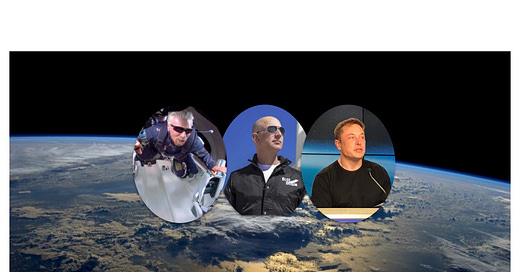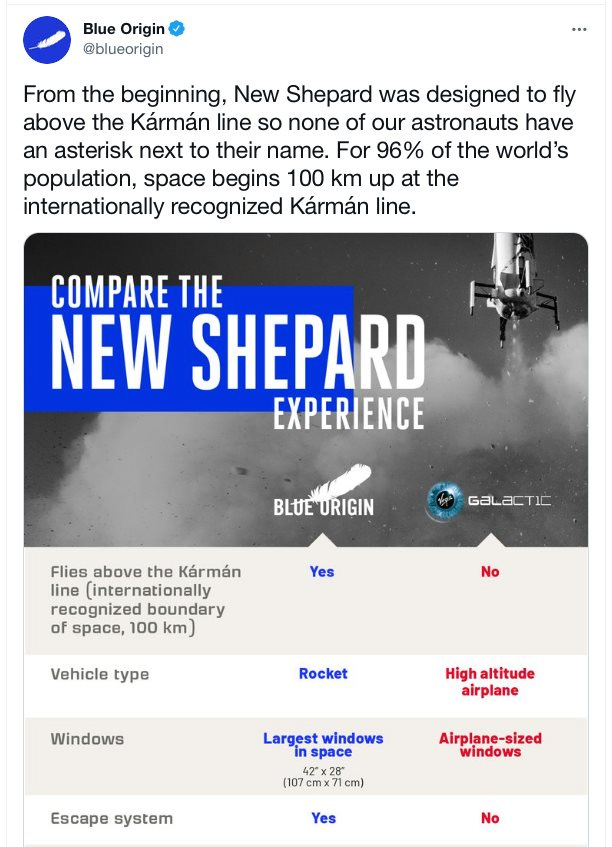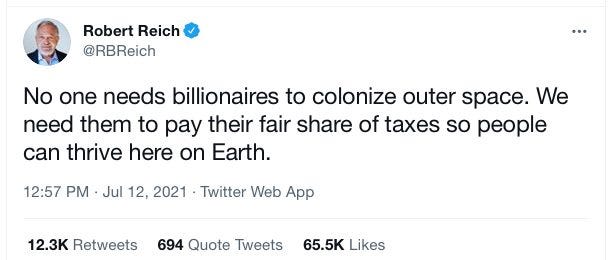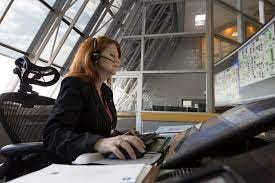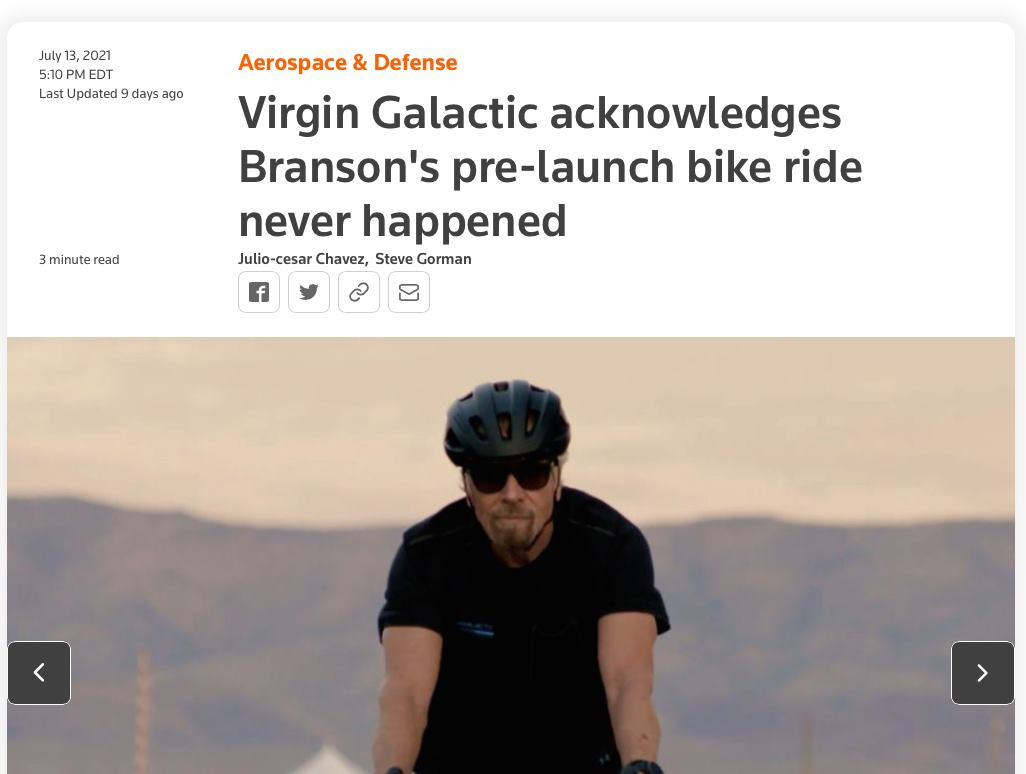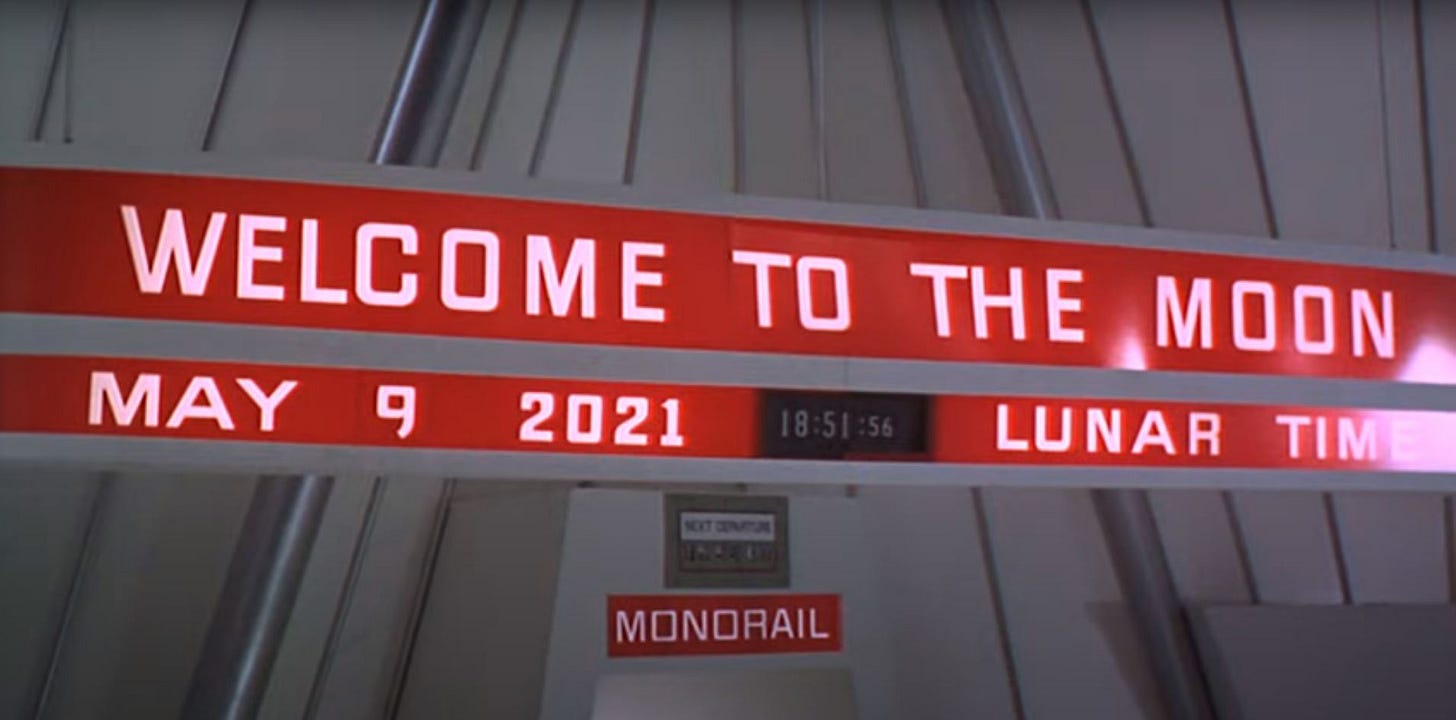The race between the “Space Barons” was heated in July. Jeff Bezos announced he would be one of the first passengers to fly his capsule to the edge of space. Richard Branson was having none of that. He took off in his Virgin Galactic space plane a few days earlier than Bezos’ flight.
There were plenty of snarky comments from the two companies. Blue Origin tweeted that their boss, Bezos, would be passing the internationally recognized line of space while Branson's flight would only reach what the U.S. considers to be the line delineating space.
That snide back and forth disappeared as each billionaire was able to enjoy a few moments of weightlessness in his respective spacecraft. Congratulations followed from one team to the other.
THE DEBATE
There was criticism from others wondering why the two men didn’t spend some of their money helping the poor, or improving the environment? A former U.S. Labor Secretary tweeted Bezos and Branson should both pay their fair share of taxes.
TRANSITION
Those July flights were historic. It is a further transition from government-only space travel to the commercial space business. As I mentioned in Part 1, Bezos and Branson are in different businesses. Branson isn’t looking to take passengers into orbit. He hopes to give to those who can afford it, a ride like no other. In the future he would like to create a really fast way to fly around the world.
Bezos, on the other hand, is building an orbital rocket called the New Glenn. His engines will be used in some of his competitors' large rockets, and he really wants to build a moon lander (but the government recently denied his appeal on the loss of the moon contract).
TRANSPARENCY
But these companies are businesses. They are not governed by all the same rules as NASA, which serves the American public. While NASA is funding several of these commercial efforts by contracting for flights (Elon Musk’s SpaceX and Boeing to the International Space Station), the companies have the lead position. They call many of the shots on these launches and missions. That has led to a very different relationship with the public and the media with questions about transparency.
Reporters who have long covered NASA are used to detailed engineering schematics, experts explaining spacecraft systems, and “clean feed” audio of launch Firing Rooms, crews on board, and mission control. The space companies now control all of that information and decide what to provide to the public. All are adopters of social media, especially Musk and Branson, as a way to communicate and cultivate company branding.
The companies are now TV producers too, providing webcasts with employees as commentators. Are they being transparent? If something goes wrong will the picture or audio feed be cut?
The webcast of the Virgin Galactic flight with Branson came under criticism courtesy of some reporting by Reuters. Even Stephen Colbert, the host of the Virgin Galactic program poked fun at the webcast.
Colbert referred to the reporting on his own program, “The Late Show.” The webcast showed video of Branson riding a bike to his space center before take off. Branson even referred to the bike ride after his flight. But it never happened as portrayed. Virgin Galactic called it a mistake.
TRANSFORMATION
What does the commercial future of space look like? Science fiction writers have speculated for decades and provided several suggestions.
(Scene from the movie Avatar Credit: Avatar.com)
A corporation is the primary mover in James Cameron's Avatar, where protecting brand image and extracting resources drive the story.
Consider The Expanse, where humanity is split into factions all competing for our solar system's natural resources. Ask Frank Herbert about market scarcity-Dune-"The spice must flow."
In 1969, the year of humanity’s first lunar landing, Hollywood’s “first space western” imagined a lunar base (in the year 2021). Moon Zero Two's main character, an astronaut, turns down a corporate offer to be a passenger-pilot so he can reach further into unexplored space.
With NASA’s support, commercial interests are pushing their way into near-earth space and beyond. The billionaires are helping build the transport. It’s a private-public partnership that will take us deeper into the cosmos. Let’s hope we get the whole story from all involved.


